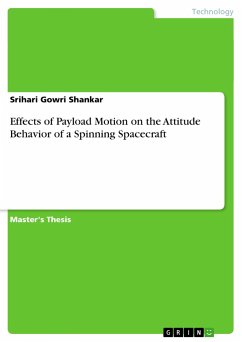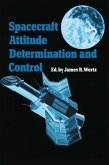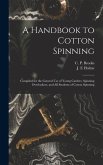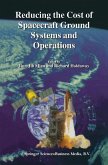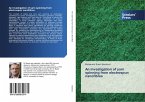Master's Thesis from the year 2011 in the subject Engineering - Mechanical Engineering, grade: none, University of California, Davis, language: English, abstract: Spacecraft systems almost always include subsystems such as imaging or scanning instruments that are designed to move relative to the main spacecraft body during some part of the spacecraft's mission. Depending on the relative size and location of such moving parts, their motion can have appreciable effects on the overall translational and/or rotational motion of the spacecraft. This research project investigates the impact of oscillatory motion of the spacecraft-mounted payload on the global attitude behavior of the spacecraft. The investigation is carried out by first deriving the equations of attitude motion of a spacecraft system that consists of a main cylindrical body to which are connected four slender rods each of which has a prescribed oscillatory motion relative to the main body. The main body is given initialspin and transverse angular velocities, and the resulting nutation angle is monitored over time.The results obtained show that oscillatory motion of a payload relative to the main spacecraft body will, in general attenuate the spacecraft's nutation. The degree of nutation attenuation depends on several factors, including the inertia of the payload compared to that of the spacecraft, the location of the payload on the spacecraft, the frequency of the payload's motion, and the amplitude of such motion.The implication of these results is that payload motion can be exploited to assist a spacecraft's nutation damper system. In fact, any movable payload can save as a backup nutation damper if the designated nutation damper should fail.

